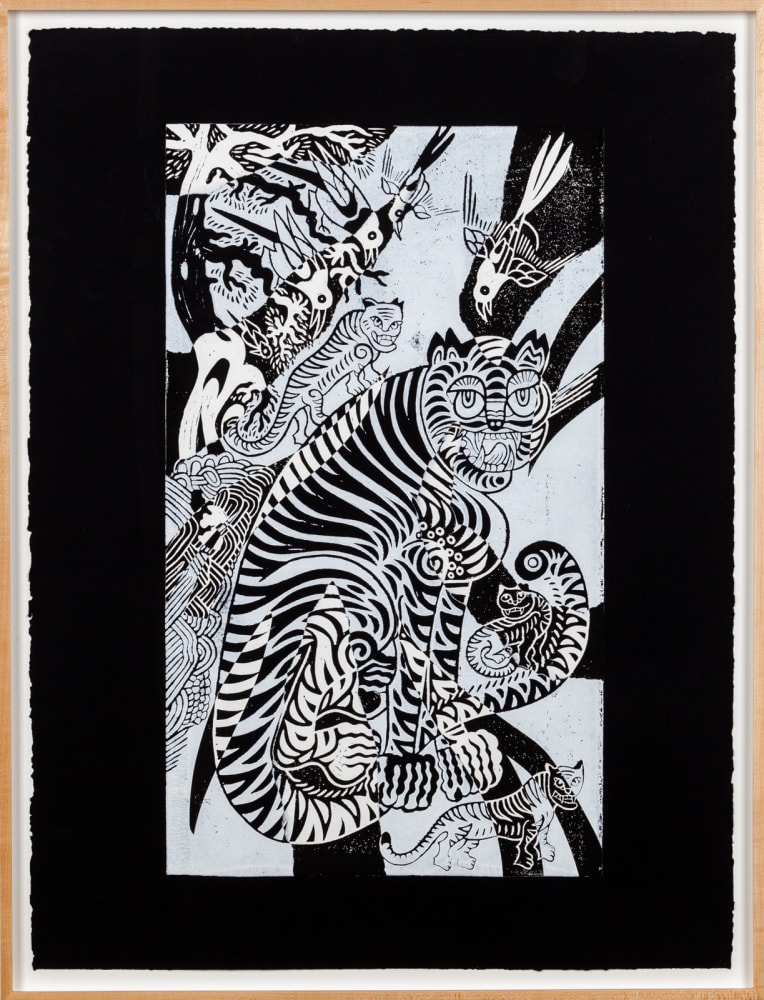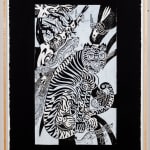-
Artworks
Kour Pour UK, b. 1987
Tsugigami Tiger, 2021Block printing ink and collage on paper32 x 24 x 1.5 in
81.3 x 61 x 3.8 cm7896Further images
This work was created for Kour Pour: Familiar Spirits, the artist’s debut solo exhibition with Kavi Gupta. For the show, Pour created a stunning new body of work conceived around...This work was created for Kour Pour: Familiar Spirits, the artist’s debut solo exhibition with Kavi Gupta. For the show, Pour created a stunning new body of work conceived around the idea of family—not only that into which we are born but the families we construct as our personal histories unfold.
Pour’s new Tsugigami Tiger series mobilizes the eponymous Japanese craft tradition, similar to collage. To create these works, Pour overlaid two prints atop each other—one made with white ink on black paper, the other made with black ink on white paper. Additional torn and cut elements were carefully glued atop the first two sheets. The multiple layers create the perception that the tigers are emerging from a fog.
Similar to his renowned Carpet paintings, which integrate visual elements from pre-Victorian Persian carpets, these paintings contain elements that reference both global art history and various interconnected cultural iconographies. The central motif in this new body of work is a tiger, an image immediately suggestive of a range of art historic and craft traditions, but which is also a personal reference for Pour.
“These tiger paintings originate from one of my best friends Phil, who is Korean and grew up in Chile,” Pour says. “He became a tattoo artist. He has a big Korean tiger tattoo on his belly.”
To make the works in Familiar Spirits, Pour innovated a new block printing process in his studio. “I was looking for a material that would allow me to make something like a wood block print, but much larger. My uncle is in the construction industry. After talking with him, I decided to use repurposed sheets of vinyl flooring.” Pour carved his foundational images into the vinyl and transferred them to paper or canvas. Additional elements were then collaged or painted on.1of 2












